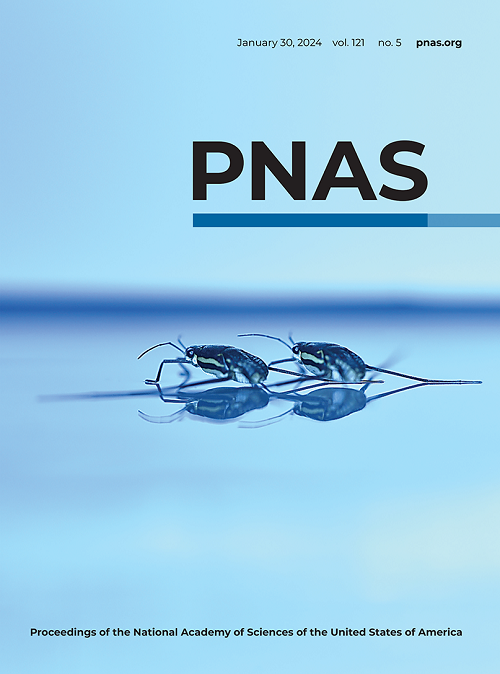哺乳动物大脑的神经网络结构
IF 9.4
1区 综合性期刊
Q1 MULTIDISCIPLINARY SCIENCES
Proceedings of the National Academy of Sciences of the United States of America
Pub Date : 2024-09-17
DOI:10.1073/pnas.2413422121
引用次数: 0
摘要
连通组学研究进展迅速,但揭示连通结构一般原理的模型还远未完成。我们对已发表的 10 6 篇连接报告进行的分析表明,在参考图谱绘制的 790 个灰质区域之间可能存在的 623 310 个轴突连接中,成年大鼠大脑区域间连接组约有 76 940 个,相当于 12.3% 的网络密度。我们使用多分辨率共识聚类对性别二态网络进行了研究,该聚类生成了一个相互连接的模块/子系统的嵌套层次结构,其中女性有三个一阶模块和 157 个终端模块。自上而下的层次分析表明,在中枢神经系统的喙突区(前脑-中脑)有一对镜像一级模块与行为控制有关,而在中间区(菱形脑)有一个单一的一级模块与行为执行有关;这些结果的意义与大脑的发育和进化有关。自下而上的层次分析揭示了已知和陌生的模块,提出了强有力的可通过实验验证的假设。全局网络分析表明,所有枢纽都在喙模块对中,一个丰富的俱乐部延伸至所有三个主要模块,网络呈现出小世界属性。以视网膜的视觉路径为例,包括来自内源性昼夜节律发生器--视上核的周期性连接权重变化的影响。这项研究阐明了哺乳动物大脑区域间神经元网络结构的原理,并提出了一种动态结构连接建模策略。本文章由计算机程序翻译,如有差异,请以英文原文为准。
Neural network architecture of a mammalian brain
Connectomics research is making rapid advances, although models revealing general principles of connectional architecture are far from complete. Our analysis of 10 6 published connection reports indicates that the adult rat brain interregional connectome has about 76,940 of a possible 623,310 axonal connections between its 790 gray matter regions mapped in a reference atlas, equating to a network density of 12.3%. We examined the sexually dimorphic network using multiresolution consensus clustering that generated a nested hierarchy of interconnected modules/subsystems with three first-order modules and 157 terminal modules in females. Top–down hierarchy analysis suggests a mirror-image primary module pair in the central nervous system’s rostral sector (forebrain–midbrain) associated with behavior control, and a single primary module in the intermediate sector (rhombicbrain) associated with behavior execution; the implications of these results are considered in relation to brain development and evolution. Bottom–up hierarchy analysis reveals known and unfamiliar modules suggesting strong experimentally testable hypotheses. Global network analyses indicate that all hubs are in the rostral module pair, a rich club extends through all three primary modules, and the network exhibits small-world attributes. Simulated lesions of all regions individually enabled ranking their impact on global network organization, and the visual path from the retina was used as a specific example, including the effects of cyclic connection weight changes from the endogenous circadian rhythm generator, suprachiasmatic nucleus. This study elucidates principles of interregional neuronal network architecture for a mammalian brain and suggests a strategy for modeling dynamic structural connectivity.
求助全文
通过发布文献求助,成功后即可免费获取论文全文。
去求助
来源期刊
CiteScore
19.00
自引率
0.90%
发文量
3575
审稿时长
2.5 months
期刊介绍:
The Proceedings of the National Academy of Sciences (PNAS), a peer-reviewed journal of the National Academy of Sciences (NAS), serves as an authoritative source for high-impact, original research across the biological, physical, and social sciences. With a global scope, the journal welcomes submissions from researchers worldwide, making it an inclusive platform for advancing scientific knowledge.

 求助内容:
求助内容: 应助结果提醒方式:
应助结果提醒方式:


